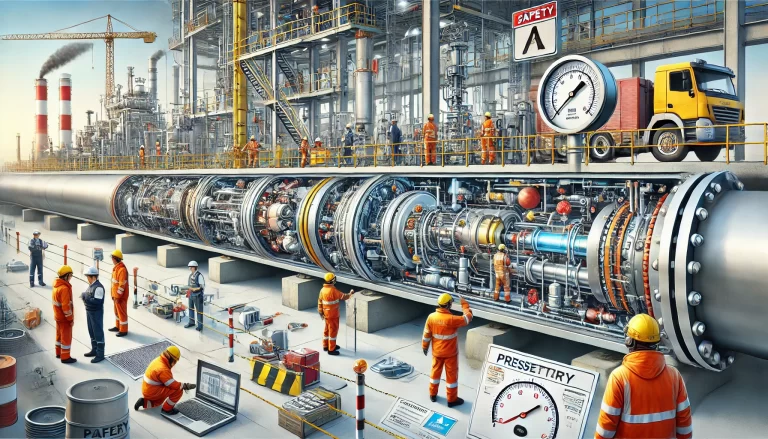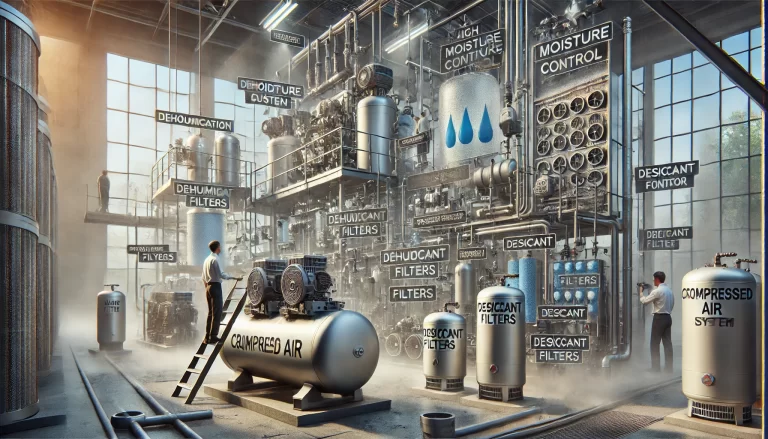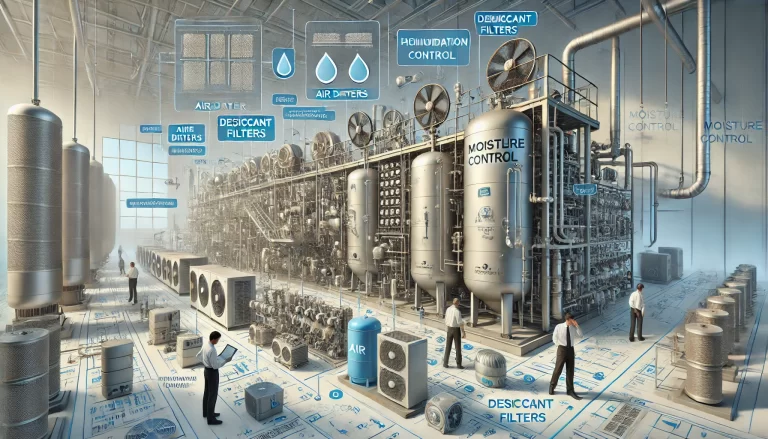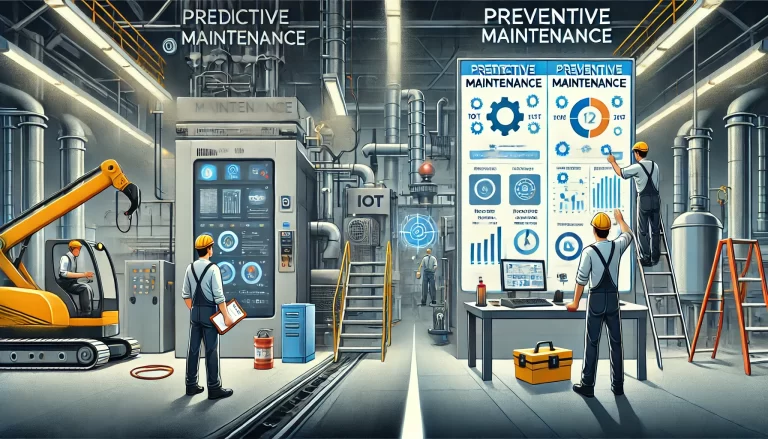1. Objective
To ensure that all automation instruments used in chemical production—such as temperature, pressure, flow, level, and analytical instruments—operate in an accurate, reliable, and safe condition. This aims to:
Prevent production fluctuations, product quality issues, safety incidents, and environmental pollution caused by instrument failures.
Extend the service life of instruments and optimize maintenance costs.
Standardize the instrument maintenance workflow and ensure personnel safety during maintenance activities.

2. Scope
This plan applies to all automation instruments used for process control, monitoring, interlocks, and Safety Instrumented Systems (SIS) in chemical plants. It covers:
Scheduled maintenance
Preventive maintenance (PM)
Corrective maintenance (CM)
3. Maintenance Principles
Safety First: Strict adherence to safety procedures and work permit systems (e.g., hot work, confined space, working at height, Lockout-Tagout (LOTO)) to ensure personnel, equipment, and environmental safety.
Prevention-Oriented: Preventive maintenance plans based on operational data, instrument history, and manufacturer recommendations.
Planned Execution: Maintenance should preferably be scheduled during plant shutdowns, low-load periods, or when standby equipment is available to minimize production impact.
Standardization: All work must follow Standard Operating Procedures (SOPs) and manufacturer manuals.
Quality Assurance: Execute all maintenance steps and acceptance criteria strictly to ensure quality.
Complete Records: Document every detail of the maintenance process, test data, component replacement, and results.
4. Types of Maintenance
Routine Inspection: Visual checks, status observation, and verification of key parameters (local vs. remote readings).
Preventive Maintenance (PM): Scheduled cleaning, calibration, function tests, and component checks or replacements (e.g., seals, filters, batteries).
Planned Overhaul: Conducted during plant shutdowns for in-depth inspection, disassembly, cleaning, calibration, performance testing, and component upgrades.
Corrective Maintenance (CM): Diagnostic and repair actions after an instrument failure.

5. Maintenance Workflow
5.1 Planning and Preparation
Identify instruments to be maintained and the type of maintenance (PM/Overhaul).
Review instrument records, history, and manufacturer documentation.
Prepare SOPs, safety analysis (e.g., JSA, HAZOP), tools, spare parts, and consumables.
Obtain necessary work permits (LOTO, hot work, confined space, etc.).
Coordinate with process operators to confirm safe working conditions (e.g., isolation, depressurization, flushing).
Prepare maintenance checklists for recordkeeping.
5.2 Safety Isolation & Process Handling
Strictly implement LOTO: isolate power, signal, and process media.
Verify medium is purged and systems are depressurized and cooled.
Set up safety barriers or restricted zones.
5.3 Disassembly (if required)
Disconnect from process pipeline (flange, thread, compression fittings).
Disconnect electrical/pneumatic connections; label and document positions.
Protect sensitive components (sensors, diaphragms, etc.).
5.4 Inspection & Diagnosis
Appearance: Check for damage, corrosion, or leakage.
Mechanical Parts: Check for wear, stiffness, or looseness.
Electrical Parts: Terminal tightness, oxidation, insulation resistance.
Impulse Lines / Sampling System: Clogs, leaks, corrosion.
Function Testing: Offline or online simulation.
Fault Diagnosis: Use diagrams, manuals, and diagnostic tools (multimeter, calibrator, software).
5.5 Cleaning & Servicing
Clean internal/external surfaces (avoid damaging sensitive components).
Clean/replace filters and strainers.
Lubricate moving parts with proper lubricants.
Replace aging seals (O-rings, gaskets).
5.6 Calibration & Adjustment
Connect to standard calibration devices (e.g., pressure pump, dry-block calibrator).
Select at least 5 calibration points (0%, 25%, 50%, 75%, 100%).
Record values and calculate errors.
Adjust zero, span, and linearity if out of tolerance.
SIS/Safety-critical instruments: Perform trip testing and 2oo3 logic checks.
5.7 Component Replacement
Replace damaged or degraded components using approved spare parts.
Re-calibrate and test after replacement.
5.8 Reinstallation & Reset
Reinstall instruments securely in original positions.
Restore wiring/piping with attention to explosion-proof requirements.
Tighten process connections as per torque specifications.
Notify process team for commissioning.
5.9 Commissioning & Testing
Slowly reintroduce process media and check for leaks.
Verify instrument readings and DCS/PLC consistency.
Perform online function checks (valve travel, bypass logic).
Confirm stable and accurate operation.
5.10 Acceptance & Documentation
Joint acceptance by maintenance and process personnel.
Complete maintenance record form with test data, parts replaced, and signatures.
Update instrument asset files.
Close work permits.
5.11 Site Cleanup
Remove tools, spare parts, and dispose of waste as per environmental regulations.

6. Safety Notes (Top Priority!)
Always comply with site safety rules and permit systems.
Mandatory LOTO for all energy sources (power, gas, process lines).
Special permits for confined space, hot work, height.
Use appropriate PPE for hazardous media.
Be familiar with MSDS and emergency response procedures.
Use explosion-proof tools in hazardous zones.
Calibrate safely and work in pairs. Stop work and report when in doubt.

7. Maintenance Details by Instrument Type
| Instrument Type | Maintenance Focus |
|---|---|
| Temperature Instruments | Check sheath, terminals, insulation; clean sensor; calibrate with dry-block/furnace. |
| Pressure Instruments | Check impulse lines, clean diaphragms; calibrate with pressure source; test switch points. |
| Flow Instruments | Inspect sensors, electrodes, mechanical wear; clean measuring tubes; simulate or bench-test. |
| Level Instruments | Check connection, probe/antenna; clean components; calibrate span/zero; simulate level. |
| Analytical Instruments | Clean/replace probes and filters; calibrate with standards; inspect reagents/gases. |
| Control Valves | Check actuator leaks, spring, linkage; calibrate positioner and full-stroke test. |
| DCS/PLC I/O Cards, Barriers | Visual inspection; LED and terminal checks; channel signal testing; redundancy switchover test. |

8. Maintenance Record & Acceptance Criteria
Maintenance Record
Use a standardized maintenance form to document:
Performed steps
Measured values
Diagnosed issues
Replaced components
Final outcome
Personnel signatures
Acceptance Criteria
Instrument appearance intact, properly mounted, leak-free.
Accurate indication/output, within tolerance.
Functional operation of measurement, control, communication, interlocks.
SIS instruments pass safety function test.
Documentation complete and compliant.
Work area clean and safe.
